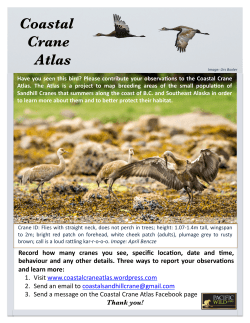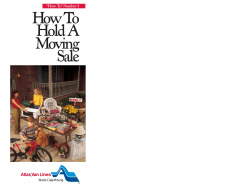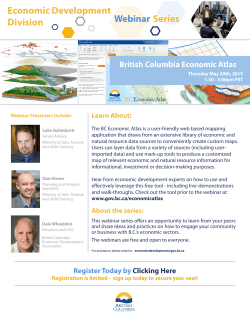
here. - University of Southern California
SPECIAL SUMMER 2015 MDA 599 Course: ATLAS FEVER: FROM THE WUNDERKAMMER TO THE DATA BASE Instructors: W.J.T. Mitchell (University of Chicago) and Justin Underhill (University of Southern California) What is involved in trying to comprehend a totality with a visual array? This seminar will investigate practices of visual display that construct totalizing assemblages of multiple images, texts, and objects in order to provide a comprehensive understanding of a situation, period, or body of knowledge. The central example for examination will be the famous Mnemosyne Bilderatlas of the German art historian, Aby Warburg, which aimed at producing a comprehensive overview of the entire world of visual arts and media, embracing such disparate phenomenon as Hopi serpent rituals, Renaissance and ancient sculpture, and the coronation of Mussolini. The seminar will aim more specifically at the “wall atlas,” the slide table, and the forensic “evidence wall” that serves as operational tableaux for seeking out patterns in massive amounts of data. From Andre Malraux’s musée imaginaire to the cinematic editing table to the bulletin board array of suspects, victims, locations, and other clues in criminal investigations, the Bilderatlas has provided an investigative tool for organizing and comprehending large bodies of information. Artistic projects such as Gerhard Richter’s Atlas will be considered, along with cinematic explorations of the evidence wall in crime and espionage films (e.g., the virtual evidence wall in Stephen Spielberg’s Minority Report; John Nash’s schizophrenic assemblages of “evidence” in Ron Howard’s A Beautiful Mind.) As this last example (and the case of Warburg) suggests, we will be interested in the psychological aspects of “atlas fever,” its relation to paranoid “discoveries” of patterns where none exist, hidden meanings in insignificant clues. The effort to see a totality, in other words, may have pathological as well as cognitive effects, encouraging forms of obsessive compulsive behavior and post-traumatic stress disorder, the occupational hazards of drone operators, flight controllers, and code-breakers. Readings for the course will include Ernst Gombrich and David Freedberg on Aby Warburg, Carlo Ginzburg on clues and historical method, Georgio Agamben, and Georges Didi-Huberman on the concept of the Bilderatlas, Sergei Eisenstein on montage, and W. J. T. Mitchell on montage, method, and madness. Second Summer Session Course Meetings (all 1:00-‐5:10 PM): July 13, July 15, July 17, July 20, July 22, July 24, July 27, July 29, August 3, August 5, August 10. Held at the Getty Research Institute
© Copyright 2025











